28 Essential Workforce Retention Statistics for C-Suite Executives and HR Leaders

A Global Employee Recognition and Wellness Platform
When I first entered the employee engagement space, I was struck by a recurring thought: companies were investing millions in attracting top talent, only to watch them leave within a year.
It soon became clear that employee retention wasn’t just about offering competitive pay but also about creating a work environment where people felt appreciated and valued for their contributions.
As I dug deeper, I realized that many organizations weren’t addressing the root causes of employee turnover. Instead of solely focusing on compensation, a more comprehensive approach is needed —one that includes continuous feedback, consistent recognition, and meaningful rewards.
That being said, this blog will serve as a helpful guide to highlight the festering issues around retention. I’ll share key employee retention statistics that shed light on the turnover problem and explore effective strategies to help retain your top talent.
What Do the Latest Statistics Reveal About Employee Turnover?
Employee turnover is one critical issue that continues to wreak havoc across businesses globally. While organizations strive to maintain a productive workforce, there may be factors that require more attention.
Hence, understanding those factors is crucial to seeing how they drive turnover.
The following statistics on turnover will provide you with valuable insights into what’s festering within your organization.
1. The "Great Re-evaluation": How Many Employees Are Looking to Leave?
The shift in employee priorities, driven by the pandemic, hybrid work models, and changing expectations, has led many employees to seek new opportunities actively.
- 51% of U.S. employees are actively seeking or watching for new job opportunities.
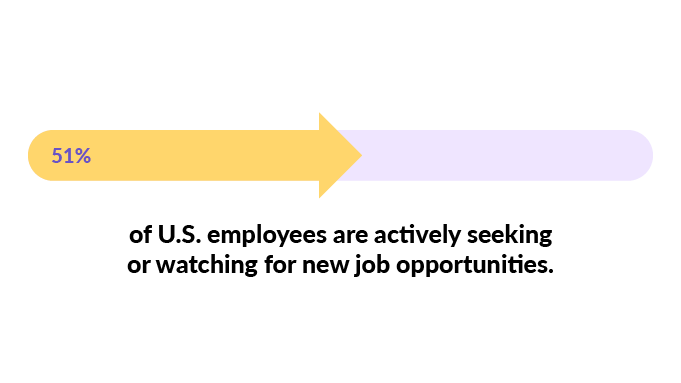
- According to research, approximately 3.2 to 3.4 million workers voluntarily left their jobs each month during the first four months of 2025.
2. The Staggering Financial Cost of Saying Goodbye
Employee Turnover not only poses operational challenges but also creates a significant financial burden.
Here's a breakdown of the costs that companies face when an employee leaves.
- A Gallup study reveals that experts estimate the cost of losing an employee to be anywhere from tens of thousands of dollars to 1.5-2.0 times an employee's annual salary.
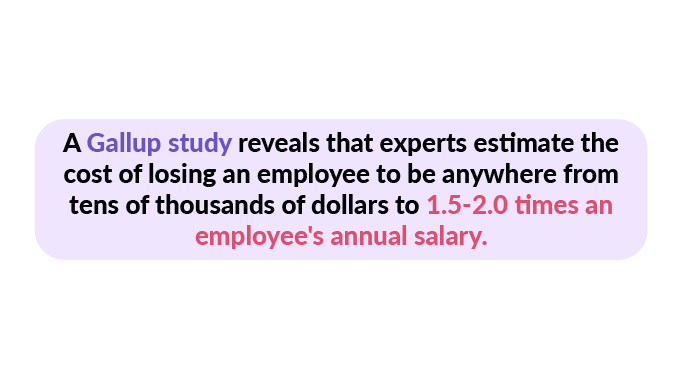
-
Research reveals that replacing C-level positions can cost up to 213% of their yearly salary.
-
As per a study, companies lose $31.5 billion annually due to poor knowledge sharing.
-
Another study reveals that a firm with 1,000 employees can expect to lose $2.4 million in productivity annually due to day-to-day inefficiencies caused by knowledge loss, and a firm with 30,000 employees might expect to lose $72 million annually.
3. The Manager's Ripple Effect: Leadership's Role in Turnover
Leaders play a crucial role in determining how long employees stay with an organization. Their engagement and leadership style can significantly impact whether employees remain committed for the long term.
Conversely, ineffective management and neglectful leadership can drive higher turnover rates.
- Seven in 10 U.S. workers say they would leave a job if they had a bad manager, according to the latest findings of LinkedIn’s Workforce Confidence survey.
This sentiment rings most true for younger employees, where 75% of Gen Z workers and 77% of millennials say a bad boss would motivate them to look for a new job, compared to 68% of Gen Xers and 61% of baby boomers.
- A Gallup study shows that nearly half (45%) of voluntary leavers report that neither a manager nor another leader proactively discussed their job satisfaction, performance, or future with the organization with them in the three months preceding their departure.
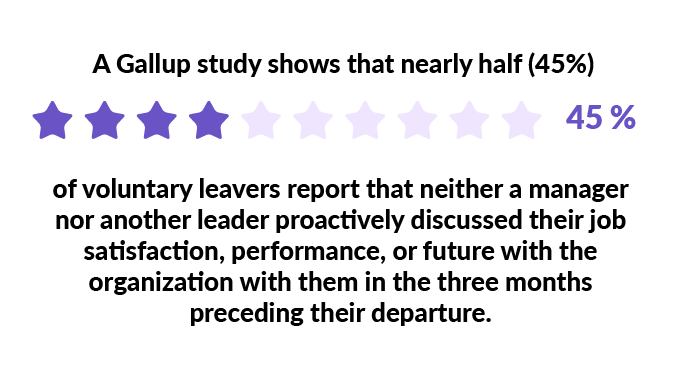
Why Do Good Employees Quit Their Jobs?
Understanding why good employees leave is the very first step in building a strong retention strategy.
These insights highlight the primary reasons employees choose to leave their jobs.
1. Career Stagnation: A Lack of Growth and Development
Employees leave when they don't foresee a future with the company. Lack of career advancement is a primary factor and driver of preventable turnover.
-
According to a study, in 2019, 20 out of 100 employees quit for career development reasons. Not only has it been the most popular reason for leaving for over ten straight years, but we have also seen it increase by 17% from 2013 to 2020.
-
Research indicates that 70% of employees are likely to leave their current job to work for an organization known for investing in employee development and learning.
-
A study suggests that 34% of employees who left their previous job were motivated to do so by the prospect of career development opportunities.
-
Research reveals that 86% of millennials would be kept from leaving their current position if their employers offered training and development opportunities.
-
According to research, over 70% of high-retention-risk employees will leave their company to advance their careers.
-
Research indicates that retention rates increase by 30-50% for companies with strong learning cultures.
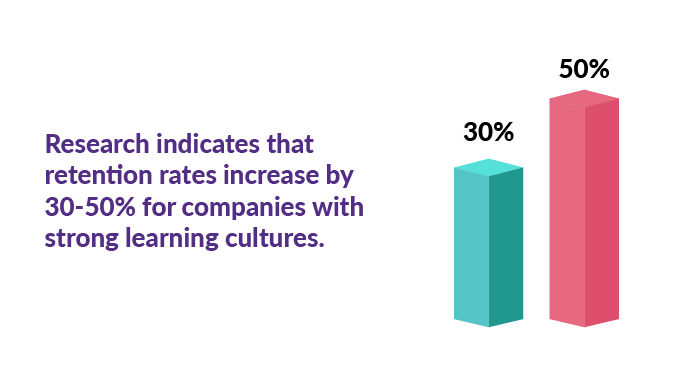
- Cultural Disconnect: Feeling Unrecognized and Undervalued
Employees do not simply leave jobs; they renounce environments where their efforts become invisible. This demonstrates how recognition and positive culture play a significant role in keeping their employees satisfied.
-
A study reveals that the top 20% of companies with a “recognition-rich culture,” have a 31% lower voluntary turnover rate.
-
A Forbes study reveals that 66% of employees would quit their jobs if they didn't feel appreciated.
-
A Gallup research found that well-recognized employees are 45% less likely to change organizations after two years.

Additionally, the onboarding experiences of employees within a company also influence retention levels, as reflected in the figures below.
- 69% of employees would be more likely to stay with the company for three years or more if they had a positive onboarding experience.
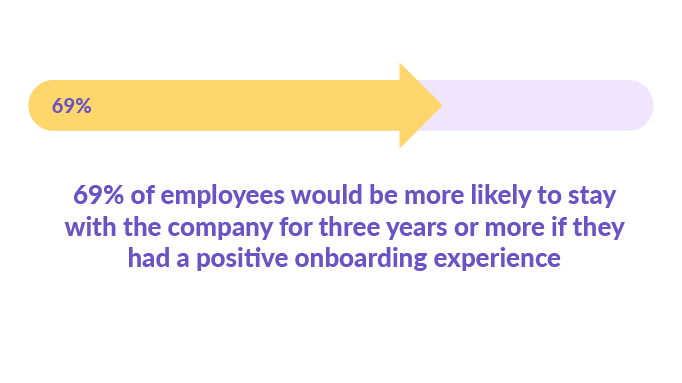
- The onboarding phase is crucial for retention, as 50% of hourly employees quit within the first 120 days.
3. The Unbalanced Equation: Pay, Benefits, and Well-being
While fair pay remains a fundamental retention factor, employees are increasingly seeking organizations that offer a more comprehensive approach to their well-being, including flexibility, work-life balance, and benefits that support their lives.
A study shows that four times as many people left their jobs due to "Engagement and Culture" or "Wellbeing and Work-Life Balance" reasons, compared to the number of people who primarily left for better "Pay/Benefits."
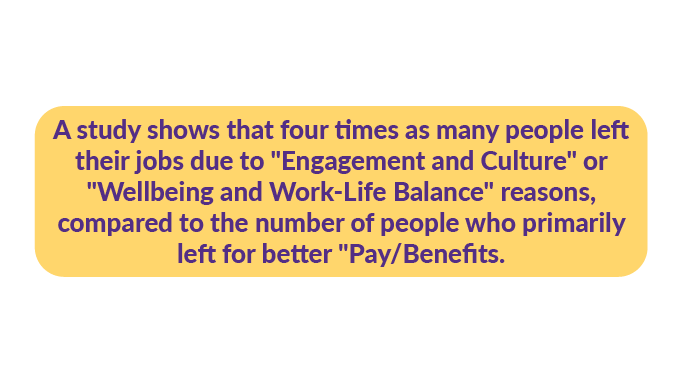
A Study suggests that when considering whether or not to take a job with a different organization, 59% of employees rate having greater work-life balance and better personal wellbeing as a very important attribute.
As per research, employees who strongly agree that their employer cares about their overall well-being, compared with those who don’t, are 69% less likely to actively search for a new job.
How Can You Improve Your Employee Retention Rate?
Now that you have a clear understanding of the factors driving employee departures and what contributes to retention, it's time to take employee retention seriously and implement effective measures to improve it.
Employee retention should be a top priority for every organization. The strategies outlined below will help you engage your talent, foster loyalty, and ensure your employees remain committed to your company.
Recommended Resource: Keeping Talent Happy: The New Rules of Employee Retention in the Modern Workplace
Strategy 1: Listen Before They Leave with Continuous Feedback
- Actionable Advice: In today’s fast-paced environment, if you plan to gauge your employee sentiment by only relying on annual reviews or exit interviews, then it’s high time to put your thinking caps on and start pondering the other way round.
By the time you wait for the annual reviews, employees may have already submitted their resignation, making it too late to address the issues that led to their departure.
Instead of relying on these infrequent and annual reviews, organizations should proactively be in pace with their employees and monitor them regularly.
Implementing regular, lightweight surveys will allow you to be constantly in tune with the needs, concerns, and engagement levels of your employees.
This ongoing feedback loop allows leaders to make timely interventions and adjustments before it is too late to prevent attrition.
- Solution: To incorporate feedback into your company culture, use tools like Vantage Pulse. This tool helps you keep updated with your employees’ opinions through quick, automated pulse surveys that measure key aspects such as employee engagement, manager effectiveness, and overall satisfaction.
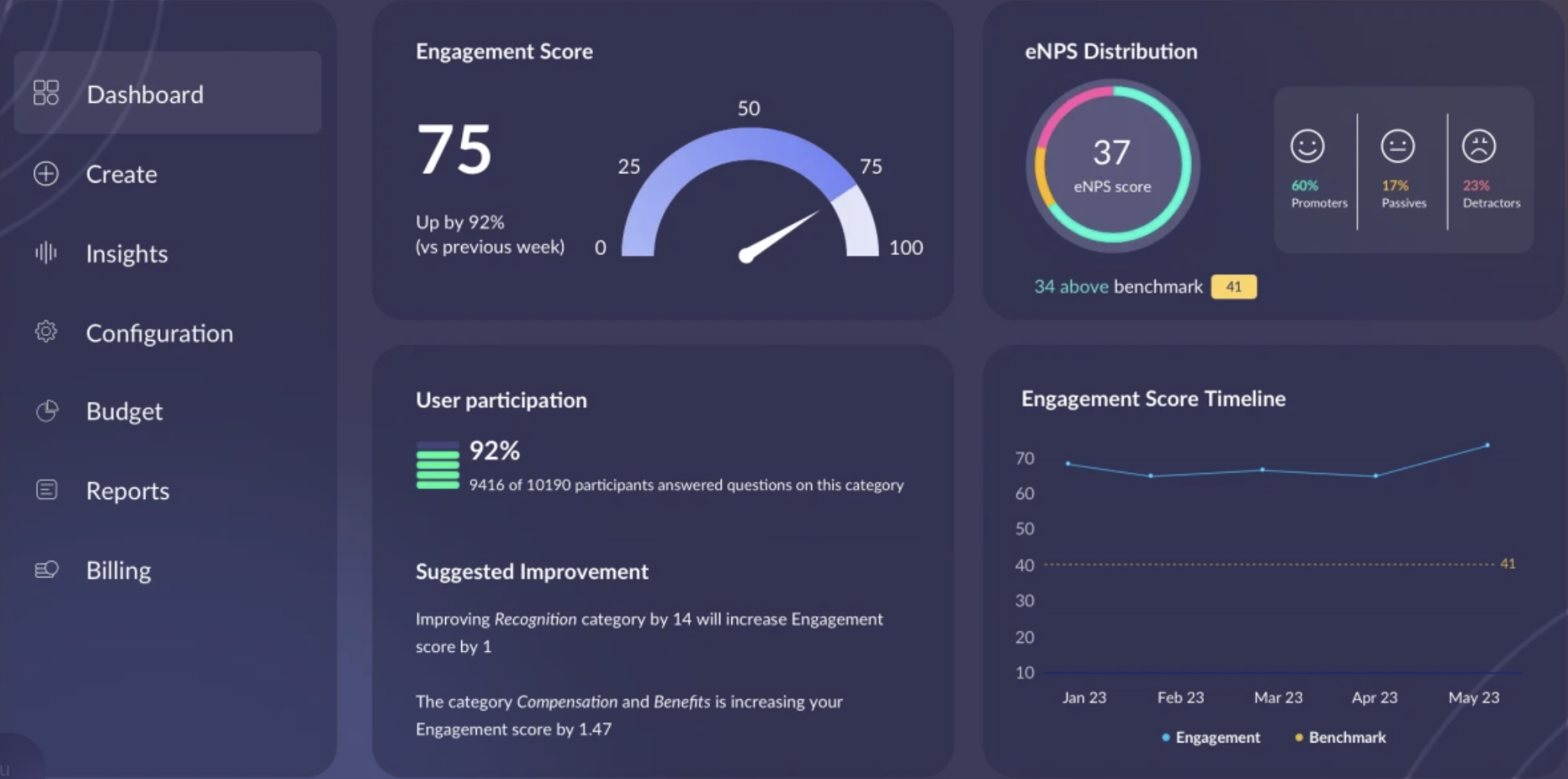
Pulse surveys are designed to keep the pulse of your organization in check, which is brief yet insightful, allowing employees to share their thoughts without feeling burdened.
The real-time data collected from these surveys enables HR leaders and managers to gauge the health of the organization instantly.
By identifying the risk factors early, you can take immediate action to address concerns, whether through additional support, career development opportunities, or adjustments to work culture.
Continuous feedback is more than just a tool for gauging satisfaction. It’s a strategic initiative that empowers organizations to stay ahead of potential turnover, engage employees more effectively, and create a work environment that nurtures long-term commitment.
-
According to a study, Employees who receive regular feedback are 2.8 times more likely to be engaged.
-
A Gallup study shows that employees are 3.6 times more likely to strongly agree that they are motivated to do outstanding work when their manager provides daily (vs. annual) feedback.
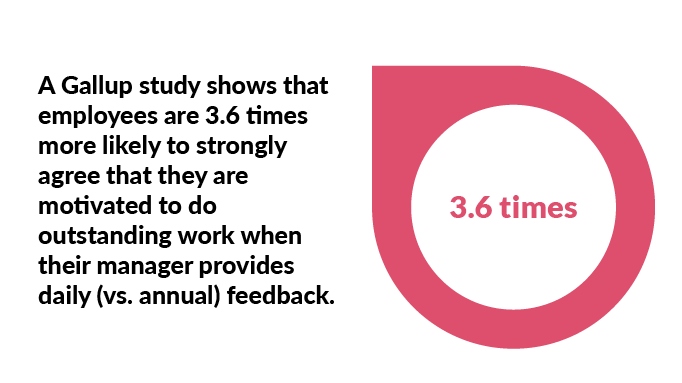
Strategy 2: Systematize Recognition to Build a Culture of Appreciation
- Actionable Advice: Recognition should not be limited to performance reviews or quarterly meetings. To create a truly engaging and motivating work environment, recognition must be woven into the fabric of daily operations.
Employees must regularly feel appreciated and valued for their contributions. Rather than making it an occasional event, make recognition a daily habit that is easy, swift, visible, and consistently tied to your company’s core values.
- According to a study, well-recognized employees are 7 times more likely to be fully engaged compared to those who are not recognized.
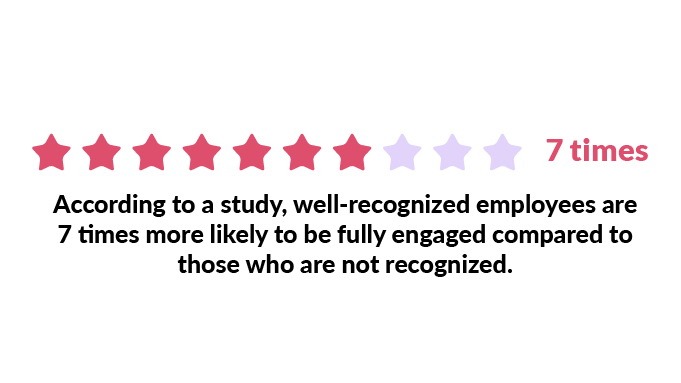
-
According to Deloitte research, employee engagement, productivity, and performance are 14% higher in organizations than in those organizations without recognition.
-
According to a survey, 79% of employees responded that an increase in recognition rewards would make them more loyal to their employer.
These figures demonstrate the true potential of regular recognition, which keeps employees entirely motivated, engaged, and loyal to organizations.
It’s not just about celebrating significant milestones, but about acknowledging the small wins and everyday efforts that keep the organization running smoothly.
- Solution: Making recognition a part of your company culture can best be assisted with tools like Vantage Recognition, which makes the entire process seamless and swift. The best part? It not only enables manager-led recognition but also allows peer recognition.
With this platform, employees can instantly recognize one another’s achievements, whether they’re meeting specific targets, displaying teamwork, or demonstrating company values.

According to a study, peer-to-peer praise is 35.7% more likely to contribute to financial growth compared to manager-only recognition.
Making recognition a part of the daily workflow ensures that nobody’s efforts go unnoticed. The hassle-free interface ensures frequent recognition, making employees feel consistently seen, valued, and connected to the organization's mission and goals.
Additionally, tying every recognition to a core company value helps you to reinforce the behaviors you want to encourage.
Strategy 3: Enhance Your Total Rewards Beyond the Paycheck
- Actionable Advice: While paychecks and bonuses are significant, they aren’t sufficient factors to drive long-term employee loyalty and engagement. To differentiate your company and forge a deeper connection with your employees, you must think beyond the paycheck.
Offer rewards that are both meaningful and memorable, that make employees feel valued on a personal level. This will demonstrate your genuine care towards their well-being and happiness.
Employees today expect more than just transactional compensation. They want to feel appreciated, recognized, and rewarded for their contributions in ways that resonate with them personally.
This means that you need to opt out of generic rewards and offer options that cater to individual preferences and lifestyle choices. Rewarding employees with experiences, personalized gifts, or unique incentives can create a lasting impression that a standard bonus check can't match.
According to Mercer’s 2022-2023 Global Talent Trends study, 89% of HR professionals surveyed say improving total rewards is a top priority. An effective total rewards strategy has a positive impact on employee engagement, retention, and a range of other benefits.
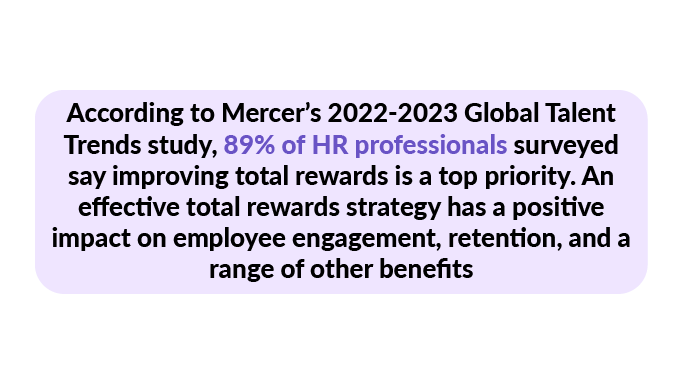
- Solution: You can make employee rewards fun and personalized by integrating Vantage Recognition into your recognition strategy.
Employees can earn points through peer-to-peer and manager-led recognition, which they can then redeem for a wide range of rewards, including gift cards, experiences, or merchandise from a global catalog.
This approach gives employees the liberty to choose what they value most, whether that’s a gift card for their favorite store, a memorable experience, or branded merchandise that reinforces their connection to the company.
By providing an extensive and diverse catalog, you empower employees to choose something that aligns with their interests and preferences. This personal connection to the reward makes it more impactful and reinforces the idea that the company cares about their individual preferences.
For high-impact milestones such as work anniversaries, exceptional achievements, or significant career milestones, you can opt for Vantage Swag to send premium, branded items directly to employees’ doorsteps.
These items can range from high-quality merchandise, such as tech gadgets, apparel, or customized gifts, that leave a lasting impression. Not only do these tangible rewards create a sense of appreciation, but they also serve as reminders of the company’s commitment to celebrating milestones and showing gratitude.
Conclusion
I’m sure these statistics have provided valuable insights into the current trends surrounding retention and turnover, shedding light on why employees leave and what can keep them committed to your organization.
Now, it’s time for you to take employee retention seriously and leverage the right tools to boost engagement and ensure your top talent stays with you.


















